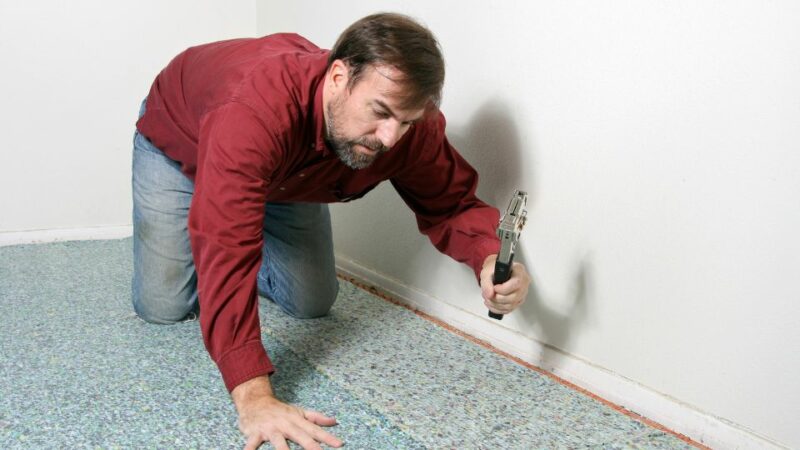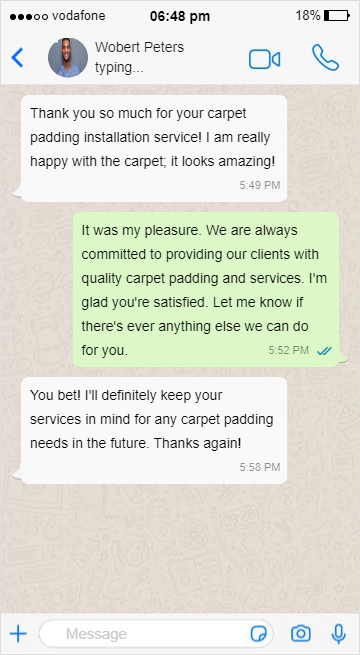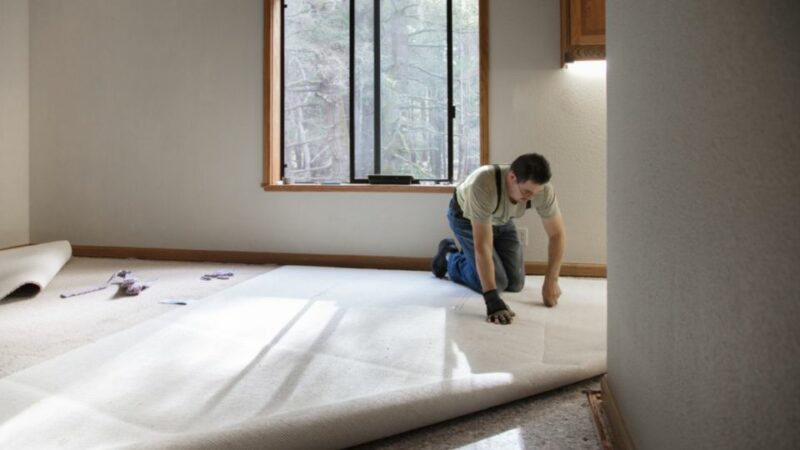Are you looking for the best carpet padding in Westover? Whether you are replacing old carpets or installing new ones, the right kind of padding can make a huge difference in how comfortable and durable your flooring is.
At CT Cleaners, we have all the carpet padding options you could need to ensure that your floors look great and last for years to come. From foam and rubber to recycled padding, we have the ideal choice for any application and budget. So, if you are in Westover, come visit us today and let us help you choose the perfect carpet padding solution!
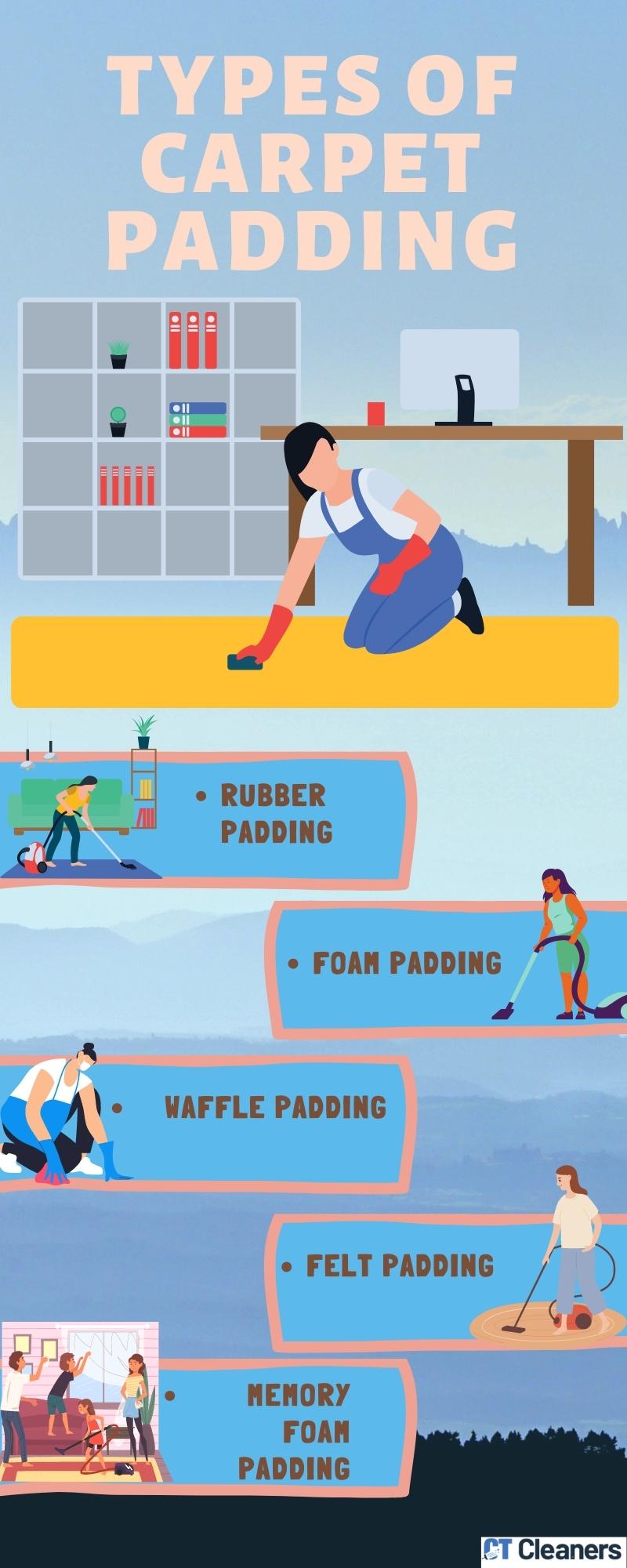
What Is Carpet Padding
Carpet padding, also known as carpet cushion, is a material that is placed between a carpet and the subfloor. It serves as a cushioning layer that provides both comfort and support for the carpet. Carpet padding is typically made of foam, rubber, or other materials that are designed to absorb impact and reduce wear and tear on the carpet.
The primary purpose of carpet padding is to add extra support and cushioning to the carpet, making it more comfortable to walk on. This can help to reduce fatigue and improve the overall feel of the carpet. Additionally, carpet padding helps to insulate the room by trapping air between the subfloor and the carpet. This can help to keep the room warmer in the winter and cooler in the summer.
Carpet padding also serves as a barrier between the carpet and the subfloor. This can help to prevent moisture from seeping into the subfloor, which can cause mold and mildew growth. It can also help to prevent the carpet from sliding around, which can cause wrinkles and ripples in the carpet.
There are several types of carpet padding available, each with its own unique set of benefits. Rubber padding is known for its durability and resistance to moisture, while foam padding is known for its softness and comfort. Waffle padding is known for its ability to provide a more secure grip for the carpet, which can help to prevent sliding.
Importance of Carpet Padding in Westover
The importance of carpet padding in Westover, or in any other location, can’t be overstated. Carpet padding plays a vital role in the overall health, comfort, and lifespan of a carpet. In Westover, where the weather can be unpredictable, and the temperature and humidity can fluctuate, the right type of carpet padding is crucial to maintaining the quality and longevity of the carpet. Here are some key reasons why carpet padding is important in Westover:
- Comfort: Carpet padding adds an extra layer of cushioning to the carpet, which makes it more comfortable to walk on. This is especially important in Westover where the weather can be harsh and people are looking for a warm and comfortable place to relax.
- Insulation: Carpet padding helps to trap air between the subfloor and carpet, which can help to insulate the room. This can help to keep the room warmer in the winter and cooler in the summer, which is important in Westover where the temperature can be extreme.
- Moisture protection: Carpet padding serves as a barrier between the carpet and the subfloor, which can help to prevent moisture from seeping into the subfloor. This is especially important in Westover where the humidity can be high and can cause mold and mildew growth.
- Carpet protection: Carpet padding helps to reduce wear and tear on the carpet by absorbing impact and reducing the friction between the carpet and the subfloor. This can help to extend the lifespan of the carpet and keep it looking new for longer.
- Safety: Carpet padding can provide a more secure grip for the carpet, which can help to prevent sliding. This is especially important in Westover where the weather can be wet and slippery.
The importance of carpet padding in Westover cannot be overstated. The right type of carpet padding can provide comfort, insulation, moisture protection, carpet protection, and safety, all of which are essential for maintaining the quality of the carpet and the overall comfort of the home or office. Carpet repair and installation is a specialized job, and it’s important to choose the right carpet padding for the job.
“I had a great experience availing carpet padding services they offered. They provided quality materials at an affordable price. I’m very satisfied with their customer service, as they were always willing to help me out whenever I needed it.”
– Courtney B., Westover
Types of Carpet Padding
Carpet padding, also known as carpet cushion, is a material that is placed between a carpet and the subfloor. It serves as a cushioning layer that provides both comfort and support for the carpet.
| Type | Advantages | Disadvantages |
|---|---|---|
| Rubber | Durable, moisture-resistant | Expensive |
| Foam | Soft, comfortable | Not as durable |
| Waffle | Grips the carpet securely | Can be less comfortable |
| Felt | Affordable, moisture-resistant | Not as durable |
| Memory foam | Provides extra cushioning, conforms to the shape of the foot | Can be expensive |
Choosing the right carpet padding depends on individual preferences and specific needs. It’s important to consider factors such as cost, durability, and comfort when selecting the right type of padding for your carpet.
How to Choose the Right Padding for Your Carpet
Choosing the right padding for your carpet is essential for the overall comfort, longevity, and appearance of your carpet. The right type of padding can provide extra support and cushion, help to insulate your room, and protect your carpet from moisture and wear and tear. Here are some factors to consider when selecting the right padding for your carpet:
- Thickness and Density: The thickness and density of the padding will affect the level of support and cushioning provided by the padding. Thicker and denser padding will provide more support and cushioning, but it will also be more expensive.
- Material: Different types of padding are made from different materials. Rubber padding is known for its durability and resistance to moisture, while foam padding is known for its softness and comfort. Waffle padding is known for its ability to provide a more secure grip for the carpet, which can help to prevent sliding.
- Subfloor: The type of subfloor you have will also impact your choice of padding. For example, if you have a concrete subfloor, rubber padding may be a better choice because it can withstand moisture better.
- Carpet Type: The type of carpet you have will also impact your choice of padding. A low-pile carpet will require less padding than a high-pile carpet.
- Budget: The cost of the padding is also an important consideration. While higher-quality padding may be more expensive, it may also last longer and provide better support and cushioning.
- Installation: Some types of padding are easier to install than others. Consider how easy the padding is to install and how easy it is to cut and shape it to fit your room.
Ultimately, the right type of padding for your carpet will depend on a variety of factors, including your budget, the type of carpet you have, and the type of subfloor you have. It’s important to consider all of these factors when selecting the right padding for your carpet.
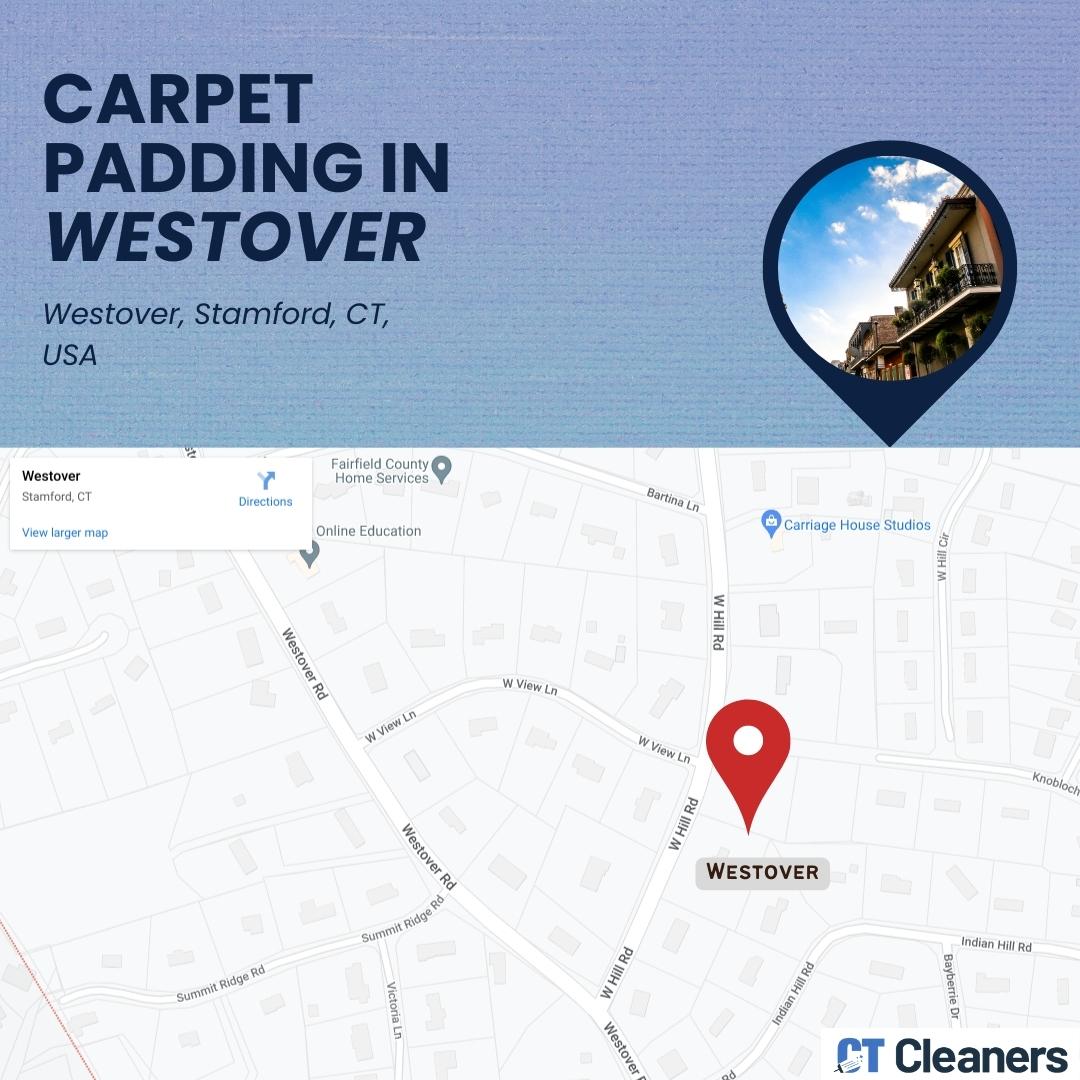
Installation of Carpet Padding
Installing carpet padding is an important step in the process of installing new carpets. It not only provides additional support and cushioning for the carpet but also helps to protect the subfloor and keep the carpet in place. Here is a general guide for installing carpet padding:
- Measure the room: Measure the length and width of the room where the carpet is going to be installed. This will give you an idea of how much padding you will need.
- Prepare the subfloor: Clean the subfloor thoroughly and make sure it is level and free of any debris or bumps. This will ensure that the padding and carpet lay flat.
- Cut the padding: Cut the padding to the appropriate size and shape for the room. Make sure to account for any doorways or other obstacles that may require the padding to be cut to fit.
- Lay the padding: Lay the padding on the subfloor, making sure that it is centered and even. Use a utility knife to trim any excess padding around the edges of the room.
- Secure the padding: Use a carpet stapler or double-sided carpet tape to secure the padding to the subfloor. This will help to keep the padding in place and prevent it from sliding around.
- Install the carpet: Once the padding is in place, you can install the carpet on top of it. Make sure to stretch the carpet tightly and secure it to the tack strip around the perimeter of the room.
It’s important to note that the specific instructions for installing carpet padding may vary depending on the type of padding being used. Always refer to the manufacturer’s instructions for specific guidance.
In conclusion, carpet padding is an essential component of any carpet installation. It provides extra support and cushioning for the carpet, helping to keep it in place and extend its lifespan. Additionally, carpet padding can help to insulate the room, protect the subfloor from moisture, and provide a more comfortable walking surface.
When selecting the right padding for your carpet, it’s important to consider factors such as thickness, density, material, subfloor, the carpet type, and budget. Each type of padding has its own unique advantages and disadvantages, so it’s important to choose the one that best meets your needs. Also, keep color correction in mind when selecting the color of your padding, as it will impact how the color of your carpet looks. Carpet padding is an important but often overlooked element of any carpet installation. Don’t forget to factor it into your decision-making process!
Installing carpet padding can be a bit more challenging than installing the carpet itself. It’s important to measure the room, prepare the subfloor, cut the padding to size, lay it on the subfloor, secure it, and then install the carpet on top. However, if you’re not comfortable doing it yourself, it’s best to seek professional help. Also, always refer to the manufacturer’s instructions for specific guidance on installation.


